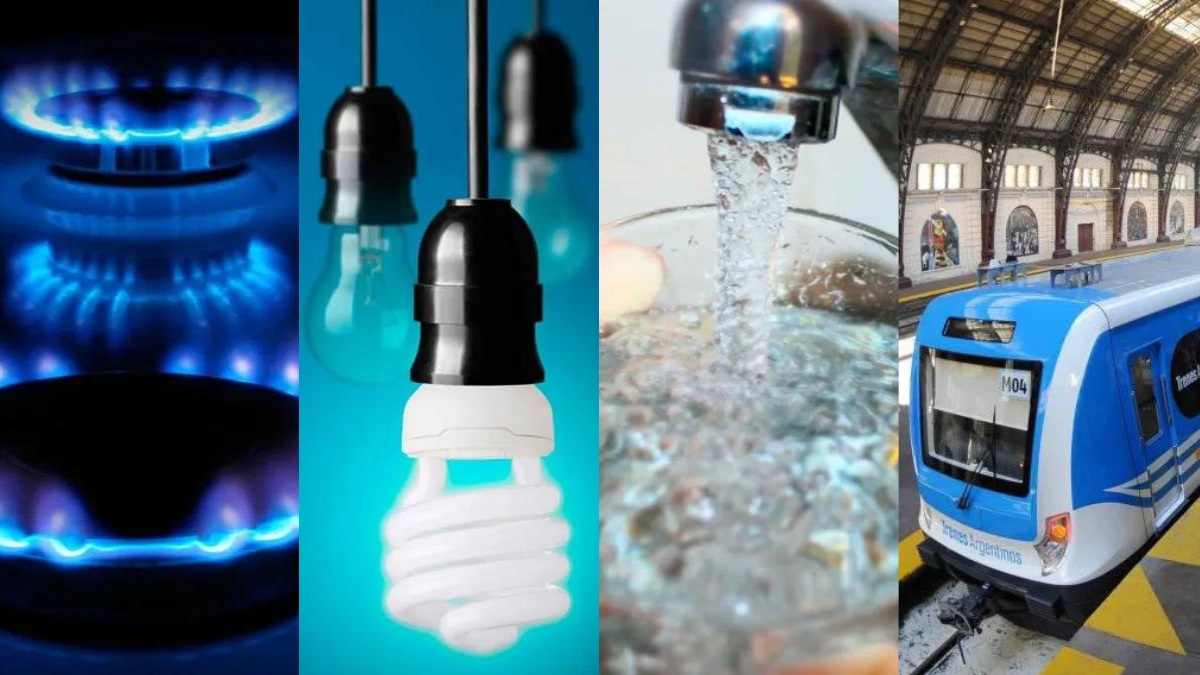prepaid-medicos-salud.jpg
Preparations are one of the sectors that have increased the most so far this year.
According to him UBA-Conicet Rates and Subsidies Observatorythe weight of the basket of public services in the salary (average registered private) It went from 5.9% last December to 12.2% in October of this year. In this sense, the weight higher is attributable to transportation spendingwhich today reaches 42% (when in December of last year it was 28%) and it represents a significantly greater increase than the other services.
For its part, the item that includes housing, electricity, water and fuel expenses accumulates an increase of 200%, double the general inflation, which reaches 101.6%.
The report calculated that a household had to spend, without subsidies, $134,414 per month to cover the expense of these services. This expense was reduced 2.5% compared to the previous month due due to lower gas consumption and despite the increase in water (4.9%) and electricity (1.8%).
However, high, medium and low income households in the AMBA pay rates that on average They cover 53% of the costs. For its part, the State continues to subsidize the remaining 47%.
When compared to December 2023, The cost of the total basket of services increased 369% based on rate updates by removal of subsidies.
The increases that arrive in November: transportation, water, prepaid bills and rents
November marked new increases for public services. While October inflation could be below 3.5% registered in September, the penultimate month of the year is loaded with different increases that will impact citizens’ pockets.
Taxis
Since last Friday November 1st Taxi rates in the Autonomous City of Buenos Aires (CABA) increased. The rise reflects an increase of 50% and, in this way, the scheme of tariff adjustment scheduled for the second half of this year.
Thus, the value of the day token it went from $128 to $192. For its part, the nightly rate went from $154 to $230.
In turn, the flag loweringwhich is equivalent to the cost of ten tokens, also saw an increase. During the daytime, the value will rise from $1,280 to $1,920and at night it will increase by $1,540 to $2,300.
In addition, the tariff scheme establishes that the cost for every two hundred meters traveled and the surcharge for each minute of waiting will be equal to the value of a token, that is, $192 from November. The decision to update the rates was approved in July by the Buenos Aires administration, considering a “outdated day and night rates” due to the increase in input and operating costs.
Water
Water and sewer service also increased in November. In the Metropolitan Area of Buenos Aires, the increase is 4% on the part of Argentine Water and Sanitation (AySA) and adds to the rise registered in October, which marked an escalation of the 5%.
In this way, the users considered within the High Zonal Level (20% of the total) will have average expenses that will be $25,238an increase in 31% since the application of the new calculation systemlast April. On the other hand, those who belong to the Medium Zonal Level (37% of the total), They must pay an average of $22,920 and, finally, the people integrated into the Low Zonal Level (44% of the total), will have an average rate that will reach $18,417.
Fuels
After the 1% price drop that occurred in October, fuel prices increased again. It is still not known precisely what the final percentage will be for gasoline and diesel at the outlet. From the sector they contemplate a margin of between 4% and 9%.
In September, the stations sold 11% less year-on-year, if we compare the sale of 1,313,875 m3 of gasoline and diesel throughout the national territory, compared to 1,489,197 m3 that they shipped in the same month last year, according to data published by the Ministry of Energy of the Nation.
Rentals
Tenants who still have the conditions of the Rent Law repealedthey will have to face a annual update in November around 227%, according to the Lease Contract Index (ICL). When these contracts end, the indicator and frequency to update the rental amount will be subject to negotiation between the parties.
Prepaid
In terms of health, the increases in the private medicine sector They range between 3.9% and 6.9%. If these numbers are respected, They would exceed September inflation (3.5%) and that estimated for October. Some consultancies predict that it will be just below 3%, such as Eco Go, from Marina Dal Poggetto, which is betting on 2.8%.
Electricity rate in Province of Buenos Aires
The government of the province of Buenos Aires approved a new increase in the electricity rate, which responds to the adjustment in the Power Reference Prices (POTREF) and the Stabilized Energy Price (PEE), determined by the National Energy Secretariat.
This increase will be 8%as shown in the Resolution 1156/2024 of the Provincial Official Gazette. The same will be applied for October consumption, having an impact on the tickets that users will receive in the beginning of november.
Source: Ambito
David William is a talented author who has made a name for himself in the world of writing. He is a professional author who writes on a wide range of topics, from general interest to opinion news. David is currently working as a writer at 24 hours worlds where he brings his unique perspective and in-depth research to his articles, making them both informative and engaging.




